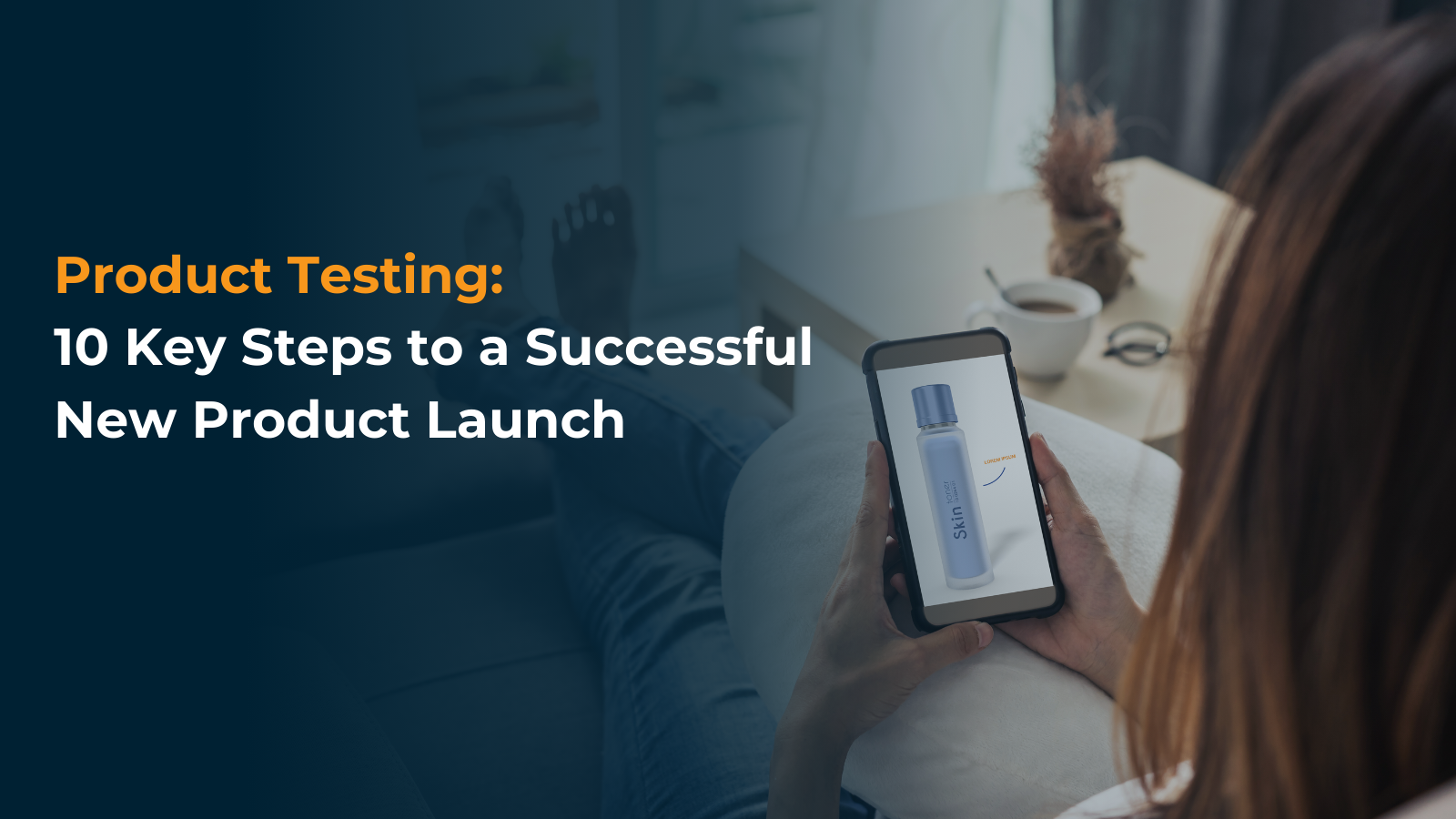How to Choose Market Research Tools That Work for You

What should your business do next to increase sales or boost profits? Should you be innovating entirely new products, improving the features of your existing products, or tweaking your marketing messages?
Smart business decisions are based on data—and market research tools are the key to collecting that data. But there are dozens of options. How do you know which customer research tools will work for your organization?
These seven questions will help you identify market research tools that will unlock the insights you need to grow your business.
1. What Do You Want to Know? Clarify Your Research Objectives and Audience
Before you can choose the market research tools that best meet your needs, you have to drill down on exactly what your needs are. What objective or goal are you trying to accomplish? What do you need to know to achieve that end?
Suppose you make a popular line of hair care products, but you want to get ahead of new haircare trends. Is messy hair making a comeback? Will people want shampoo that smells like pumpkin spice this fall? Your innovation team may be best served by a social listening tool like Brandwatch that gives them a head start on what topics are trending on TikTok.
Or maybe you want to know how much of the market you’ve captured compared to your competitors. You don’t need to talk to consumers to gather that information; you just need to pore through industry reports, sales data, or statistical analyses from a source like Statista.
On the other hand, you may not care about predicting fads. You may be more invested in delighting loyal customers by adding new features to your best-selling products. To find out what consumers love about your products and what they wish you’d do better, you have to talk with consumers.
Perhaps you’ve already had those conversations, but the insights you gathered don’t seem to align with your sales data. You suspect you’re looking at a pronounced say/do gap—but how do you evaluate true consumer behavior?
In the first step of choosing a tool for your market research, you’ll figure out:
- The objective, aim, or goal of your research project;
- The questions you need to answer to meet that objective
- The audience or resource that has those answers.
You can rule out any market research tool that isn’t geared toward your general area of inquiry. But market research doesn’t work on generalities, so it’s time to get specific.
While these general questions can help with any research project, this guide will primarily focus on consumer-centered qualitative research tools—and that means you need to think about what kind of participants you’ll need.
Are there particular demographic segments you’d like to hear more from? Should you talk with your customers or your top competitor’s customers? What geographic regions should you source your participants from? How many participants do you need, and over what time scale? How will you find and screen potential participants?
Once you define the consumers you want to hear from, it will be key to gain an understanding from potential vendors if they’ll be able to easily recruit these participants.
2. How Will You Answer Those Questions? Determine Your Research Methodology
Once you know what you’re trying to accomplish, you’ll want to align your aims with the specific research methodologies that support those objectives. Consider the following choices.
- Qualitative or quantitative research approaches? Do you want to glean consumer insights, digging deeper into the perceptions, thoughts, and feelings that surround product use? Do you want hard numbers about how much product consumers use and when they use it? Or do you plan to use both?
- Synchronous or asynchronous? Can you arrange live interactions with consumers? Or do you want to use preprogrammed question prompts that participants can provide feedback on at any time?
- Ideal communication methods? Whether it’s live or recorded, what methods will you use to interact with consumers? You may decide to use straightforward, but limited, written online surveys or chats. To pick up on subtle body language cues, though, you may prefer to meet with consumers in person or gather their feedback over live or recorded video.
- Closed or open-ended questions? Will you provide multiple-choice responses for your participants to choose between, or will you allow participants to answer questions in their own words?
Take a moment to look toward the future as well. What methodologies do you hope to leverage over the next few years? Do you need one market research platform that can handle a variety of approaches, or do you plan to leverage multiple tools?
Whatever research methodology you choose, the next question evaluates the data it will generate.
3. Do These Customer Research Tools Collect Useful Data? Consider Data Quality and Integration
If you want the data you gather to fuel smart decisions, that data must be accurate and reliable. It should also integrate with whatever other data systems you use so you can feed data directly into your existing workflows and share data with colleagues throughout your organization.
Data quality can be a complicated query, but the gist of this point is simple. Don’t waste your time on a qualitative research tool that collects weak data from unreliable sources or unmonitored panels that may be overrun by bots.
4. How Much Scalability and Flexibility Do You Need? Choose Tools That Can Grow With You
Is your company on the fast track to global domination? Or are you settled into your market niche and thinking more about optimization than expansion?
The degree of scalability and flexibility that you need from a market research tool depends on your company’s growth rate and the diversity and depth of research you want to be able to conduct.
For example, if you already have a global presence, or expect to expand into new international markets within the next year or two, a qualitative research tool that sources participant panels exclusively from the northeastern US probably isn’t a good fit.
Try to choose a market research platform that can scale to meet your changing research needs. Otherwise, you may find yourself stuck in a loop, choosing new research tools over and over.
5. Where Do You Need Help? Acknowledge Your Capabilities—and Your Limits
As you think about where your business is and where it’s going, spend some time realistically assessing your capabilities and identifying any weak spots. What skills and resources do you have in house? What do you want your research platform or partner to bring to the table?
You might simply need access to a research tool. On the other hand, you might decide that it would be helpful to have a partner to assist with:
- Sourcing research participants
- Creating interview transcripts
- Extracting actionable insights from raw data
- Conducting statistical analyses of research data
Think about your team’s technological know-how too. Is your organization typically adept at figuring out new tools or does there tend to be a slow ramp-up period? Would you prefer a tool with abundant features and infinitely customizable options or do you just want the basics?
Make sure your chosen market research tool provides sufficient and timely customer support that will meet your team’s unique needs. And no matter how tech-forward your team is, insist on an interface that your study participants will find intuitive and user-friendly.
Of course, bells and whistles aren’t free. Let’s turn next to the critical question of what you’re willing to pay for your customer research tools.
6. What Can You Afford? Understand Your Budget for Market Research Tools
Choosing the right market research platform is a balancing act. If you have champagne taste but only a beer budget, you should probably get used to drinking beer or mocktails – the sober-curious trend is here to stay.
First, list the necessary capabilities you need in a market research platform. Then, list any nice-to-have features in the order of their importance.
Ask whether your existing budget will accommodate all of those needs. If so, you’re good to go! If not, see whether the anticipated return on your investment would justify an increase in your budget allocation. Take advantage of any free trial period that your top contenders offer to test out the ROI you might be able to realize with each.
Before you sign on the dotted line, though, there’s one last question you should ask.
7. What Are Your Dealbreakers? Set Boundaries for Your Customer Research Tools
Everyone draws the line somewhere. What won’t you stand for? You may be unwilling to work with a tool with a clunky or outdated user interface. Decide what won’t work for you and use those boundaries to cull the list of potential service providers.
We’d suggest, at a minimum, that any market research tool you use must keep your data entirely secure and confidential. That includes your research design, any inside information about product development or innovation, and all participant responses.
Confirm that the research tool you’re considering has a data security certification like SOC2 and that it encrypts data both during transmission and at rest. Inquire about additional security measures and make sure you feel confident in the vendor’s responses.
You may also need to comply with data privacy laws and regulations such as the California Consumer Privacy Act (CCPA) or the EU’s General Data Protection Regulation (GDPR). If so, ask each provider you’re considering what measures they take to satisfy these requirements.
Find the Answers You Need With Market Research Tools You Can Trust

When you’ve worked through these seven steps, you’ll have a solid checklist of must-have criteria and hard-pass disqualifiers that you can use to pinpoint the right customer research tools for your company. You’ll also have a good sense of what you can afford and the return you expect to see on your investment in market research technology.
If you want to know what consumers think about your products, QualSights can give you a front-row seat to the action. Our intuitive, user-friendly Smart Platform provides deep, in-context insights into the beliefs, attitudes, thoughts, emotions, and preferences of a wide range of diverse consumers.
We also know that consumers sometimes act in ways that don’t align perfectly with their intentions or their beliefs. That’s why we’ve created always-on Smart Sensor Technology that tracks consumer behavior in real time as study participants use products in their own homes. That data lets us bridge the say/dogap and shine a light on the reality of consumer behavior.
No matter what kinds of questions you have about consumers—what they love, what they hate, or what they do when it’s 5:30 on a Tuesday night and everyone’s hungry and in a rush—our market research tools can help you find the answers. Contact us today to learn more.
Interested in seeing a demo of QualSights’ Market Research Tools?
 Research Industry Insights
Research Industry Insights 

